Telescope - Definition, Examples, Quiz, FAQ, Trivia
Discover how we see distant stars, planets, and galaxies!
What is a Telescope?
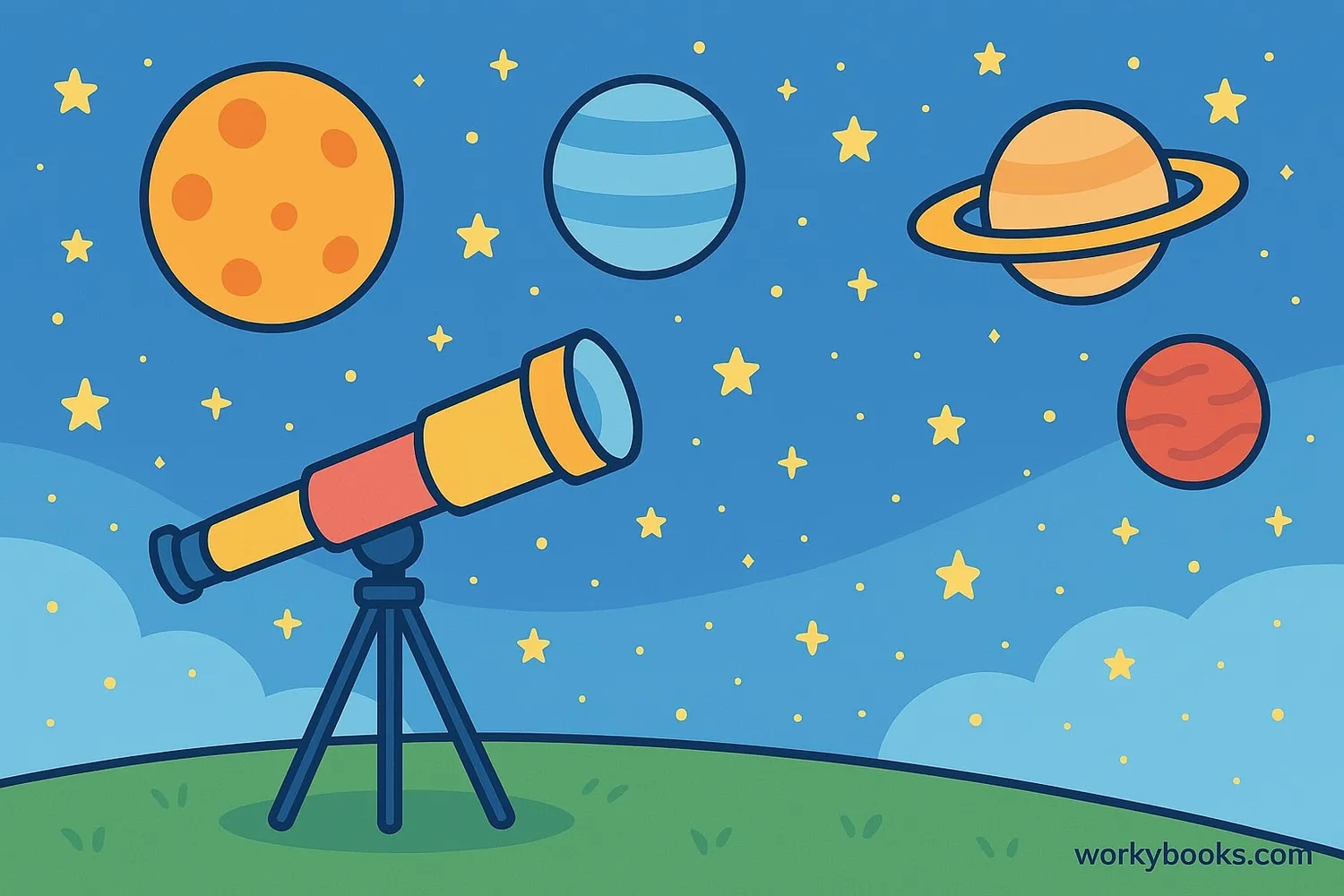
A telescope is a special tool that helps us see objects that are very far away, like stars, planets, and galaxies. Telescopes make distant objects appear larger, brighter, and clearer than they look to our eyes alone.
Think of a telescope as a "light bucket" - it collects light from distant objects and focuses it so we can see details we couldn't see otherwise. The word "telescope" comes from Greek words meaning "far" and "to look" - literally "far-seeing"!
History Fact!
The first practical telescope was invented around 1608 by Dutch eyeglass maker Hans Lippershey. Galileo improved the design and made the first astronomical observations in 1609!

All telescopes have three main parts:
• Objective: The large lens or mirror that collects light
• Eyepiece: The small lens that magnifies the image
• Tube: The structure that holds everything together
Types of Telescopes
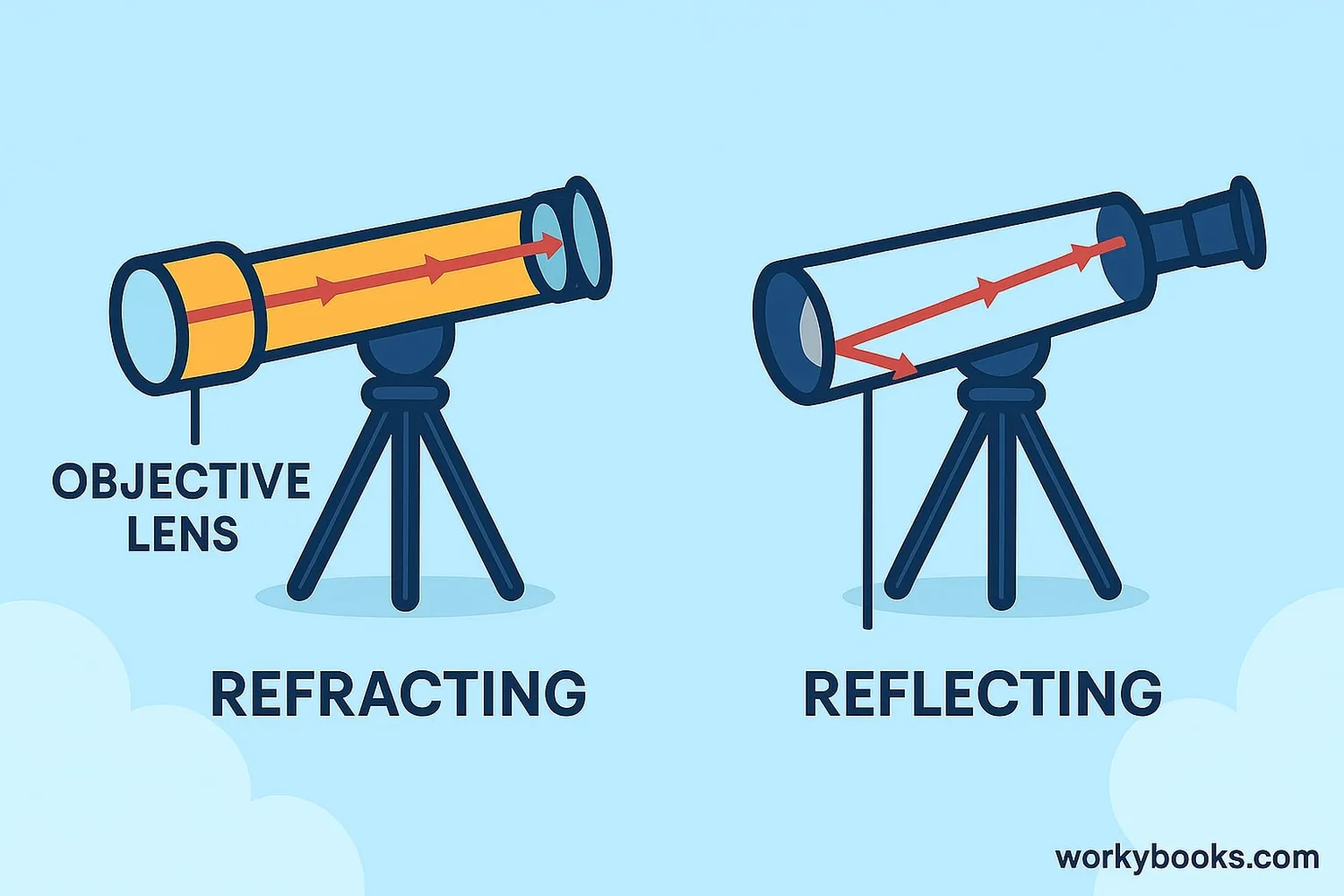
There are two main types of optical telescopes that use visible light:
Refracting Telescope
Uses lenses to bend (refract) light
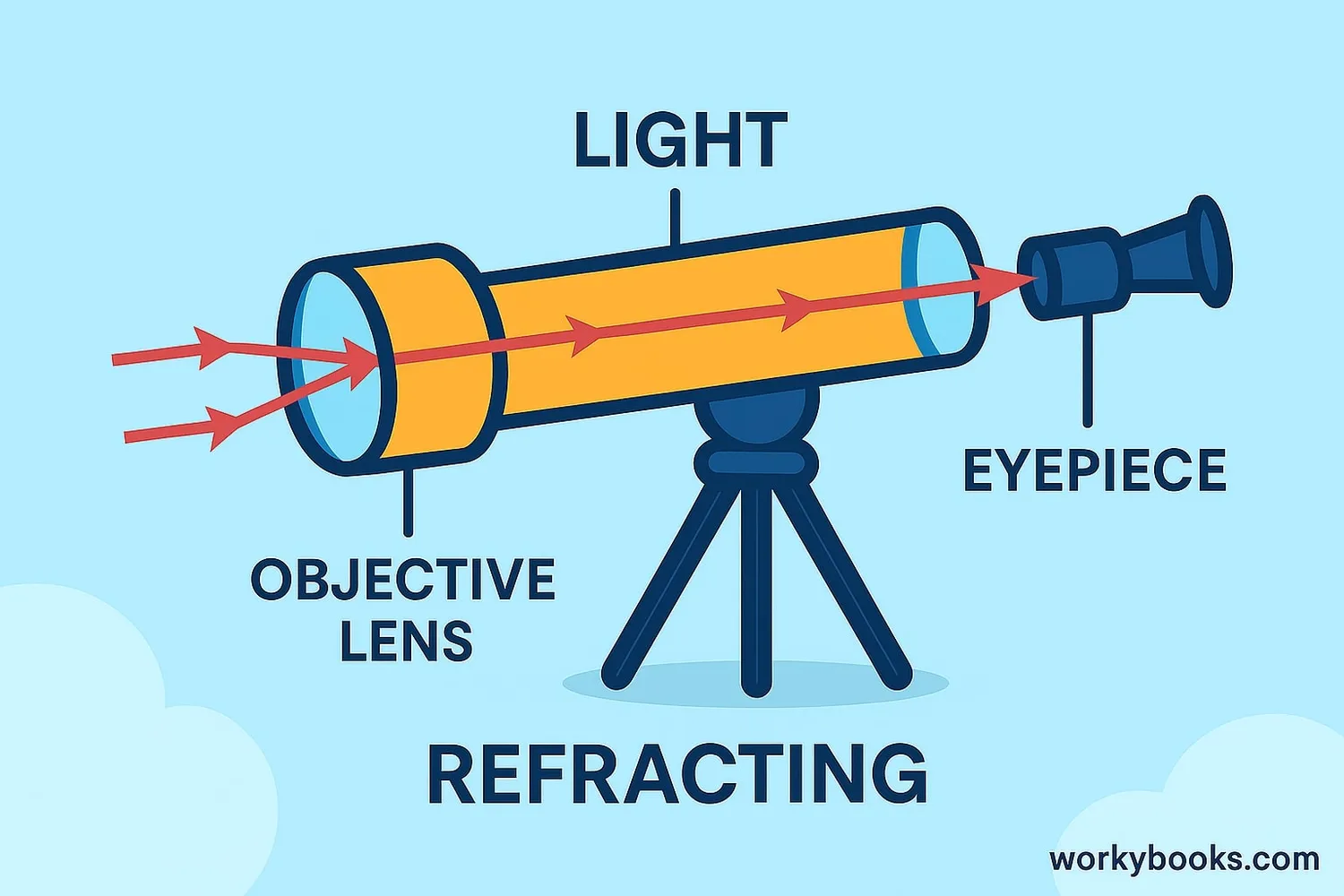
Reflecting Telescope
Uses mirrors to reflect light
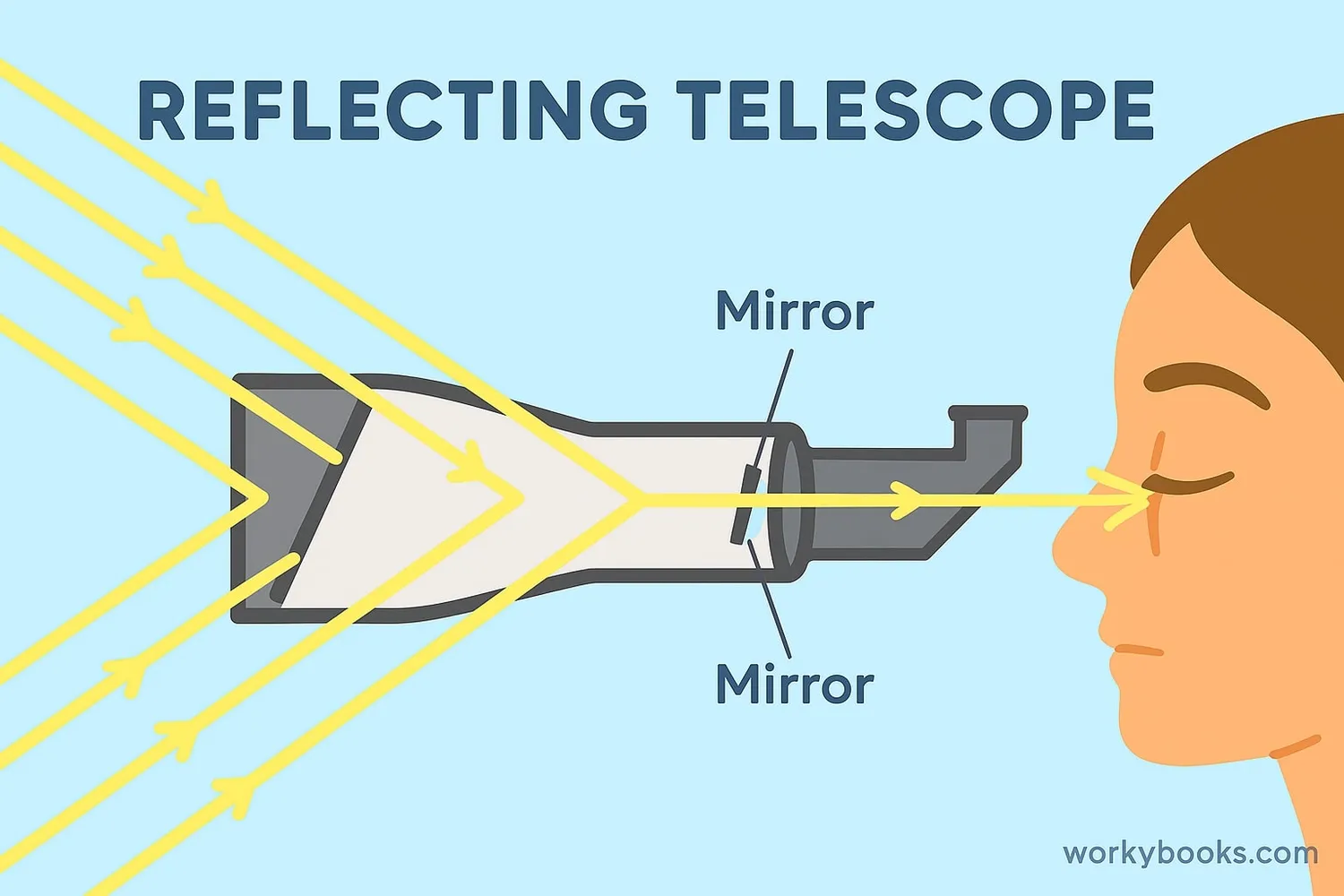
Refracting Telescopes
• Use glass lenses to bend light
• Invented first (Galileo telescope)
• Can suffer from chromatic aberration
• Good for viewing planets
Reflecting Telescopes
• Use mirrors to reflect light
• Invented by Isaac Newton
• No chromatic aberration
• Better for deep space objects
Compound Telescopes
• Combine lenses and mirrors
• Compact designs like Schmidt-Cassegrain
• Popular with amateur astronomers
• Good all-purpose telescopes
Did You Know?
The largest optical telescopes in the world are reflecting telescopes because it's easier to make large mirrors than large lenses!
How Telescopes Work

Telescopes work by collecting and focusing light using lenses or mirrors. Here's how they make distant objects appear larger and clearer:
Light Collection
The large objective lens or mirror gathers light
Focusing Light
The lens or mirror bends the light to a focal point
Magnification
The eyepiece lens enlarges the focused image
Viewing
Your eye sees the magnified image
Two important telescope measurements:
Aperture: The diameter of the main lens or mirror. Larger apertures collect more light and show fainter objects.
Focal Length: The distance from the lens/mirror to where the light focuses. Longer focal lengths provide higher magnification.
Telescope Power!
The Hubble Space Telescope can see objects 10-15 billion light-years away - that means we're seeing light that began its journey to Earth before our planet even existed!
Space Telescopes
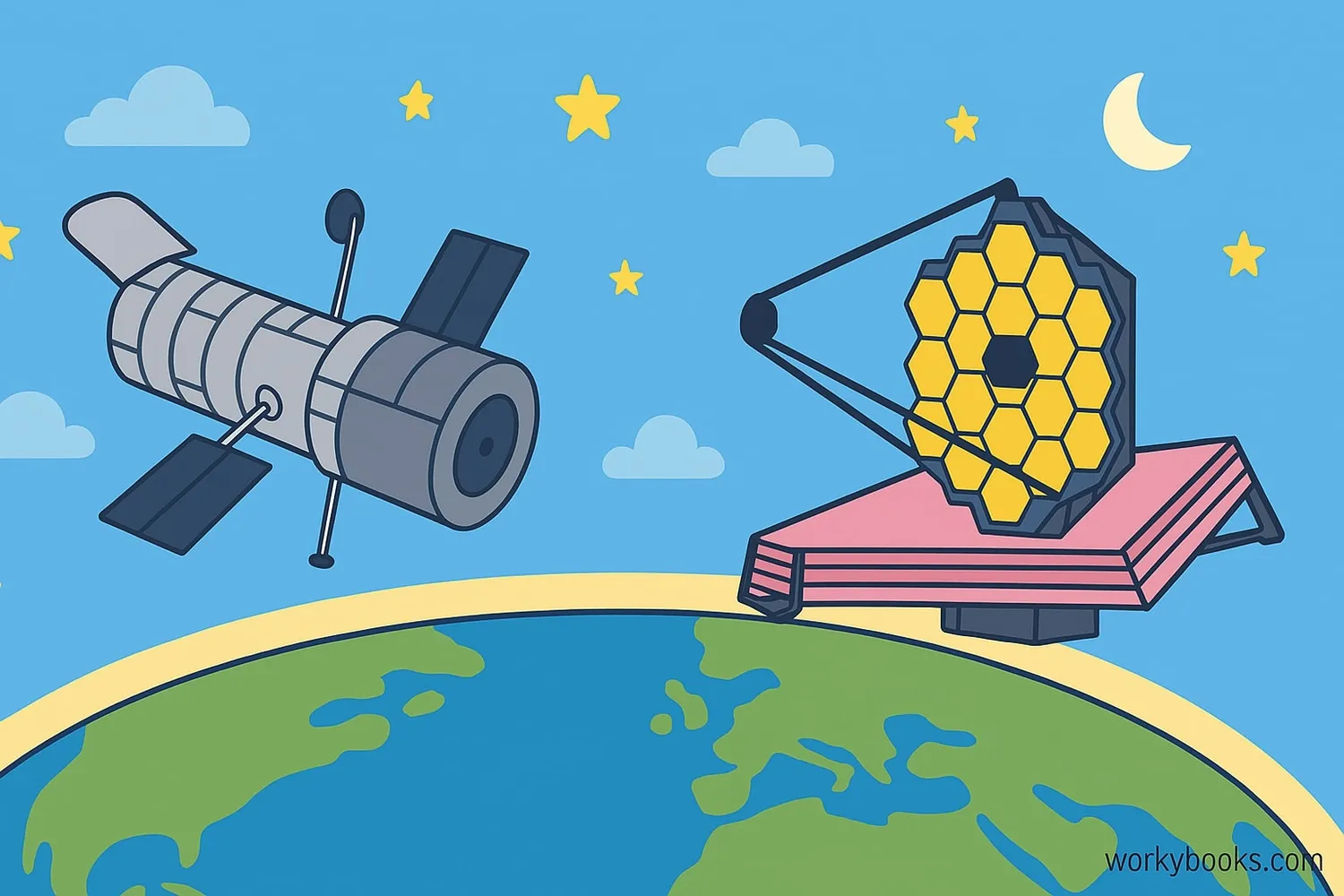
Space telescopes orbit above Earth's atmosphere, giving them a much clearer view than ground-based telescopes. Earth's atmosphere distorts light (called "atmospheric seeing") and blocks certain wavelengths of light.
Hubble Space Telescope
• Launched in 1990
• Orbits 547 km above Earth
• Takes amazing visible light images
• Helped determine the age of the universe
James Webb Space Telescope
• Launched in 2021
• Orbits 1.5 million km from Earth
• Sees infrared light (heat)
• Can see the first galaxies formed
Other types of telescopes that study different parts of the electromagnetic spectrum:
• Radio Telescopes: Study radio waves from space (like the Very Large Array)
• X-ray Telescopes: Study high-energy X-rays from black holes and neutron stars
• Gamma-ray Telescopes: Study the highest energy radiation from supernovas
Telescope Quiz
Test your telescope knowledge with this quiz! Answer all 5 questions to see how much you've learned.
Frequently Asked Questions
Here are answers to some common questions about telescopes:
Fun Telescope Trivia
Discover some amazing facts about telescopes!
Giant Telescopes
The largest optical telescope in the world is the Extremely Large Telescope (ELT) being built in Chile. Its main mirror will be 39 meters (128 feet) across - that's wider than a basketball court!
Time Machine Effect
When we look through powerful telescopes, we're actually looking back in time! Light from the Andromeda Galaxy takes 2.5 million years to reach us, so we see it as it was 2.5 million years ago.
Animal Telescope Users
Some animals have natural telescopes in their eyes! Owls have tube-shaped eyes that work like telescopes, helping them see tiny prey from great distances in low light conditions.
Mirror Perfection
The mirrors in large telescopes are so perfectly shaped that if they were scaled up to the size of Earth, their largest imperfections would be only a few centimeters high!


